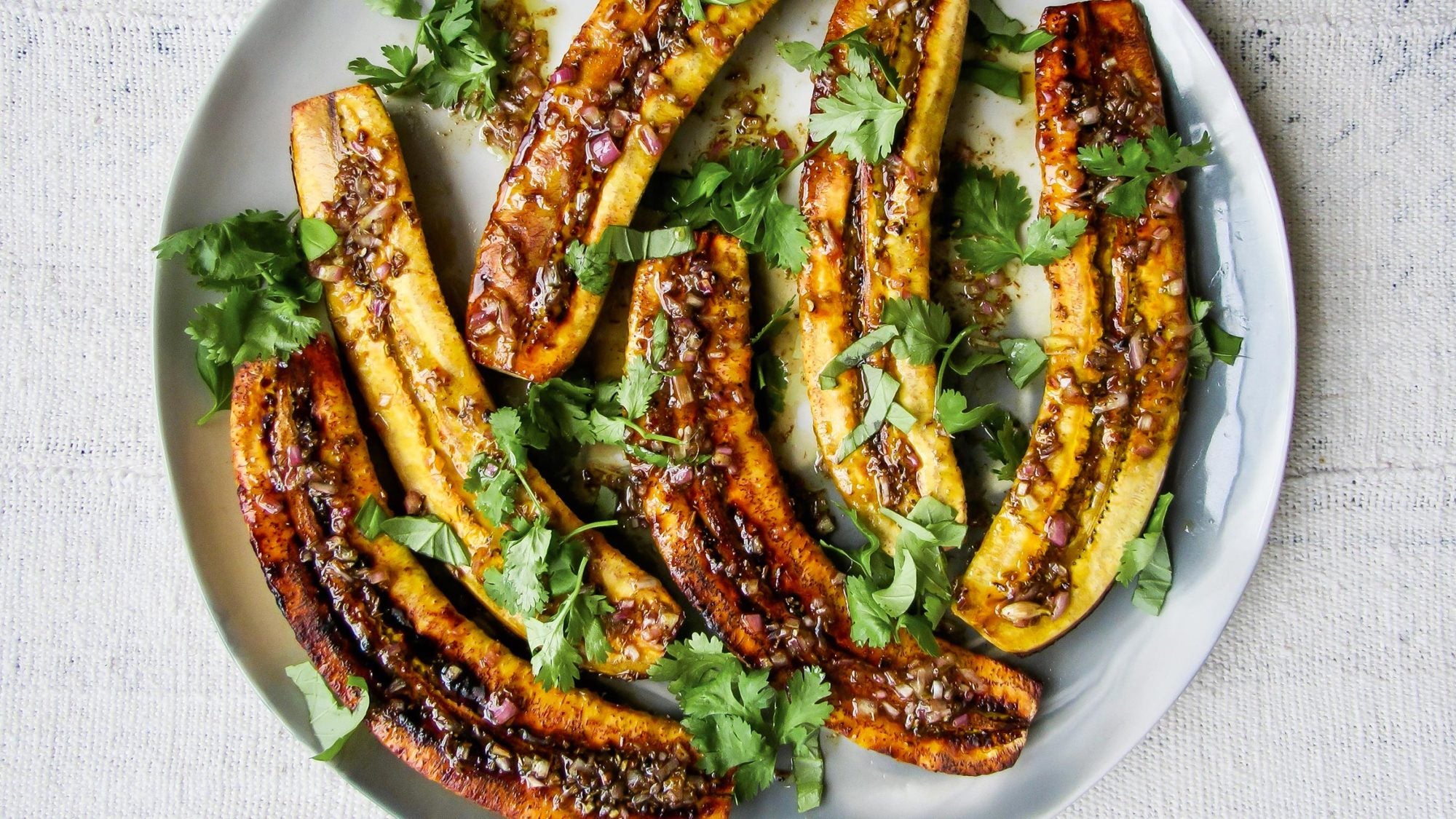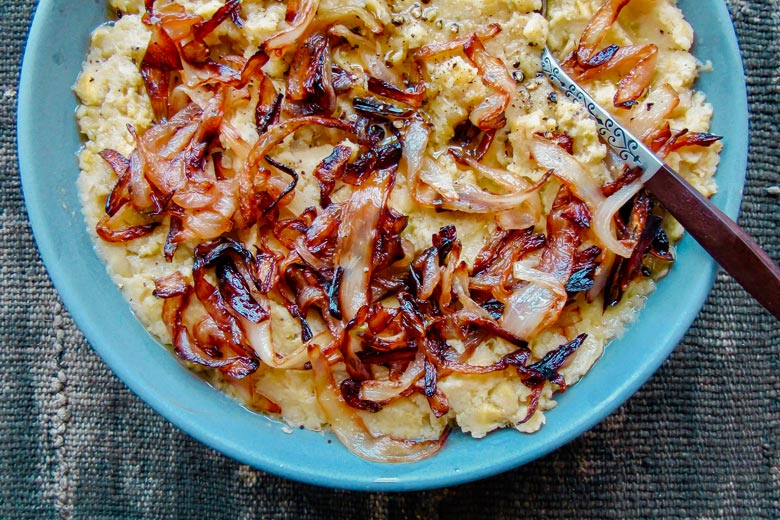
Mash, fry, and steam your way through the whole spectrum of ripeness.
As my trips to the grocery store become less and less frequent due to the shelter-in-place orders, I have embraced fresh ingredients that are versatile and shelf-stable. The wildly underrated plantain falls smack into this category—a rare brag for a piece of produce. Knowing I can cook them the second I get home, or completely forget they exist for a week or more, only deepens my love for them. They are my go-to pantry staple.
Is a plantain a fruit or a vegetable? Who knows! But that doesn’t matter. Here’s what I do know: Plantains can be used at every stage of their ripening cycle, from firm to custardy. They should never be refrigerated, as this halts their natural ripening process (when chilled, their starches begin to take on a dusty, mealy blandness that no one loves). Green plantains can take anywhere from five to seven days to ripen fully, passing from a Castelvetrano to a black olive hue. If you need to speed up the process, pop them into a paper bag—similar to what you’d do with a bunch of underripe bananas. You can even toss a banana into that plantain paper bag to get the ripening process racing along even quicker.
But what’s the hurry? Each stage of ripening reveals a new use, flexing the plantain’s marvelous versatility. Did you buy them green? Perfect. Try steaming and mashing them into an aromatic broth (as one recipe below explains), or peel, thinly slice, and fry them up into dippable golden chips. Green plantains also work well to thicken soups and stews.

Mid-ripe, firm yellow plantains? I got you. These are for roasting (skin on, to keep the moisture locked in), slicing, and tossing into a grain or leafy green salad that could use a little heft and a little variation in texture.
Fully ripe, or even overripe? These are, hands down, my favorite. Any application of heat with oil, from pan-searing to frying, will transform the sugars from a mild sweetness to a caramelized, banana-like decadence that no other starch has ever known.
Your greenest plantain is merely a blank canvas to highlight flashier ingredients. Your darkest plantain is ready to seduce you with its brown-sugar goodness. So, dear reader, trust me, plantains are a gift—to cook them is to know them, and to know them is to love them.
Photos by Yewande Komolafe